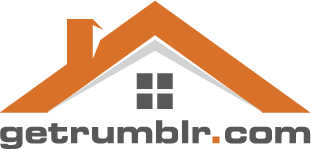Home Theater Seating Layout Guide
If you are seeking a fantastic cinematic experience at home, a good home theater seating layout is one of the critical factors in achieving that.
Utilizing recliners and couches specially made for home theaters play an establishing role in every home entertainment room design and layout.
This may come as a surprise to some, but when designing a home theater, choosing the type of seats and how many you want should be your first decision.
Sure, speakers, TV, acoustic treatment, and other details are just as essential; however, your seating choices will significantly dictate how you will go about with AV equipment type and placement.

Keep in mind that a home entertainment room is an area in your house where you can just sit back, relax, and enjoy, different types of media.
As the name suggests, home entertainment such as movies, sports, music, TV shows, and video games can be played in a home entertainment room.
If the seating placement is not done right, you won’t get the full immersion that contributes to the excellent viewing experience. The seating issue gets even more severe if you factor in multiple-row seating, in which every home theater seat in your room should still be a good spot.
Seating Placement
Inside Out
New homes or homes with new room additions often have flexibility in dimensions. The seating placement you can use for this type of space is the “inside-out” approach. Select how many seats you want and what type, then group them into rows. Afterward, you can determine the room dimensions.
Outside In
Rooms with fixed dimensions tend to favor the “outside in” seating placement approach. With this method, you start with determining the room size and getting the maximum number of seats and their type, that can be arranged into rows and that the space can hold.
Primary and Secondary Seats
When deciding the number of seats required in your home media room, try to think about the “normal, everyday” way the room will be used. Many people try to design their media rooms with throwing grand Super Bowl viewing or annual birthday parties with numerous guests in mind. In reality, it’s you and your family who will be using the media room every day.
Additionally, if you are reading this article, then you are most likely a home theater enthusiast; therefore, you’re more inclined to appreciate the specifications of home theater design and layout principles than the normal person.
For instance, say you want 12 seats in your media room. You came up with this number by thinking about how many people will be in the room at any one time and extreme use scenario. In actuality, you are only four in your household, and 98% of the time, it’s just you and your family using the room.
Rather than designing the space with 12 seats in mind, you could opt for four excellent seats as your primary seats. Make up for lack of seating area by maybe adding a couple of couches or large bean bag chairs. These kinds of seating placement and design decisions can reduce the cost of the project overall.
Performance Function of Home Theater Seating Placement
The following are function and performance related design rules that must be considered when planning a home theater seating layout.
Viewing Angles
To fill in a viewer’s field of vision, the viewing angle is recommended to be between 35 and 50 degrees. These measurements are also the standard for movie theaters, which result in minimal eye strains and contribute to a more captivating viewing experience.
Risers
All the seats in your home theater room should have a clear view of the screen. A raised seating platform, also known as risers, is necessary to bring the vision of the people seating in the back above the heads of those seating in front of them.
Bass Levels
The bass levels typically change quickly throughout the room because of various room modes. Designing the overall home theater with bass response consideration can get quite complicated; this concept requires knowing the spatial distribution of peaks and nulls and speaker and subwoofer placement. We recommend getting professional in this aspect.
Speakers Distance

You don’t want the surround speakers to be localized for enveloping sounds. Speakers are not designed to be listened to close. The recommended listener’s heads distance should be no less than four feet away from the surround speakers.
Also, seats that are against the back wall of the room suffer from a significant bass increase and poor sound envelopment. Thus, the listener’s heads should be about four feet away from the back wall.
Best Seat in the House
Armed with the knowledge from this article, we’re sure every seat in your home theater room will be the best seat in the house. Watch this space for more in-depth discussions of design and layout principles to get the ultimate media room.



